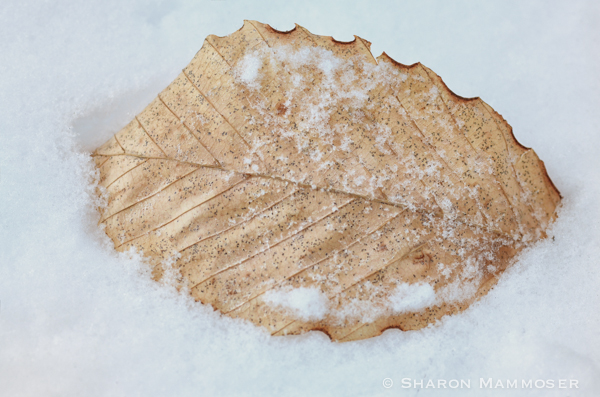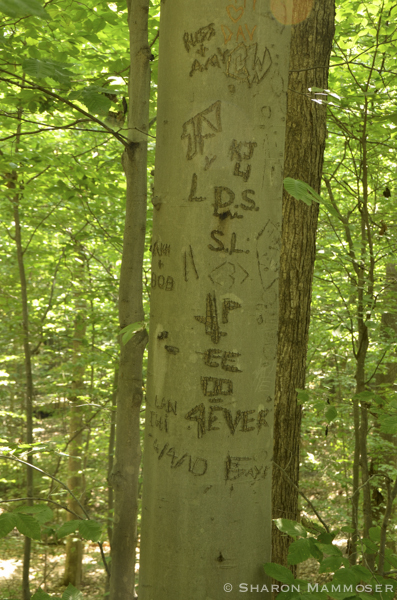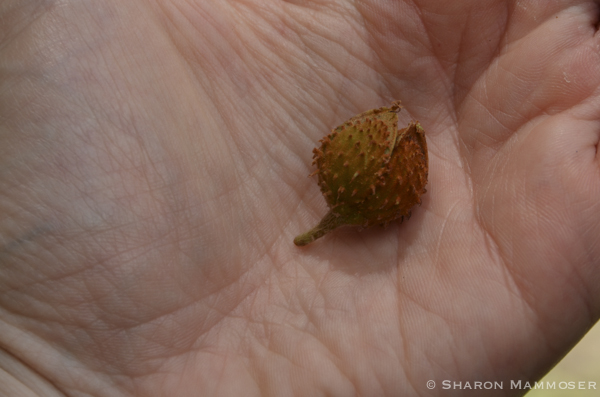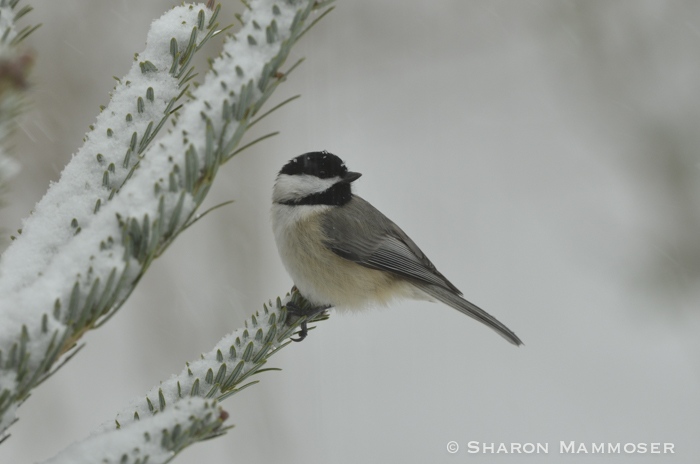As I sit at my desk and watch the rain fall gently outside the window, I cannot help but notice and admire the handful of beech trees nearby–their paper-thin leaves the color of soft caramel, decorating the gray branches like ornaments on a Christmas tree. I love how they add a splash of color to the other browns and greens of this before-spring-landscape.

Have you ever looked closely at a beech leaf at this time of year? Almost transparent, their surface feels like that of a fine paper. They are one of Mother Nature’s many example of perfection.
Do you know much about beech trees? If you’ve been following along with my blog posts you know why they still have their leaves during winter. But what else? Let’s look at some other interesting characteristics about beech trees
1.Beech trees often grow in areas with moist soil, especially along streams or creeks. They have a shallow root system, though widely spread. Interestingly, older beech trees often will propagate themselves by spreading out sucker roots that produce clumps of small beech trees around a mature tree.
2. Beech trees can live for 300 to 400 years and can be taller than 80 feet! They could have a diameter of more than 3 feet. It isn’t until the tree is 40-60 years old before they start producing nuts.

3. As you may have noticed, beech trees have smooth, gray bark. The word book is thought to come from an old Germanic word for beech, boko, since ancient inscriptions were caved in beechwood tablets. Sadly, the smooth bark of the trees often makes them a favorite for lovers’ initials and other graffiti–even today despite now knowing that such habits can be detrimental to the tree. When the bark is breeched like this it removes some protection for the tree, creating an easy pathway for insects, fungi and other pathogens to enter, sometimes causing irreparable damage. The bark scars will remain for the rest of the life of the tree.
4. Many animals feed on the beech nuts including raccoon, fox, opossum, squirrels, chipmunk, deer, mice, rabbits, turkeys, bluejays, woodpeckers, ducks, bear, grouse and others.

5. There are 11 species of beech trees that can be found in North America, the northern parts of Europe and Asia.
6. You will rarely find a beech tree in an urban setting as they cannot grow in an atmosphere rich in carbon dioxide.

7. Beech trees are a favorite nesting tree for chickadees, who are cavity nesters–choosing holes made by woodpeckers.
8. Also, American colonists used the beech leaves as stuffing in their mattresses and pillows.
9. Beech trees are pollinated by the wind.
10. Beech trees have male and female flowers on the same tree. (called monoecious) Male flowers are yellow, outlined in red–they hang as catkins from the branches. Female flowers are yellow and arranged in pairs.


Nice, nice! 🙂 I love beech trees. I actually come from a region in Romania called Bucovina or Bukowina or Buchland which means the Land of Beeches. The origin of the name is German but also Slavic(buk). The truth is that there are still primeval forests there consisting mainly of beeches.
Hi Elena, Thanks for writing! I am going to look up the area in Romania that you spoke of–thanks for sharing! I wasn’t sure anyone would appreciate a post about a kind of tree, so nice that you did! Where do you live now and how long have you been away from Romania?
I’m in Spartanburg, SC right now but I didn’t move here yet, so this summer I’ll be back in my hometown in Romania. I appreciate blogs about nature, especially those about obvious and ordinary things, visible for everybody, but yet, with so many secrets and curiosities.
Elena, I am glad you read my blog! Thanks for taking time to comment. There are SO many things out there in nature that people pass every day but may know nothing about or may not even notice. I love being able to use my photography to teach and inspire people about nature.
I have always enjoyed that delicate color in the wintertime landscape. When all the others have dropped, the beech trees shoulder their leaves even though they risk the heavy snow pulling off those branches.
Yes, me too. They add a welcome spot of color.